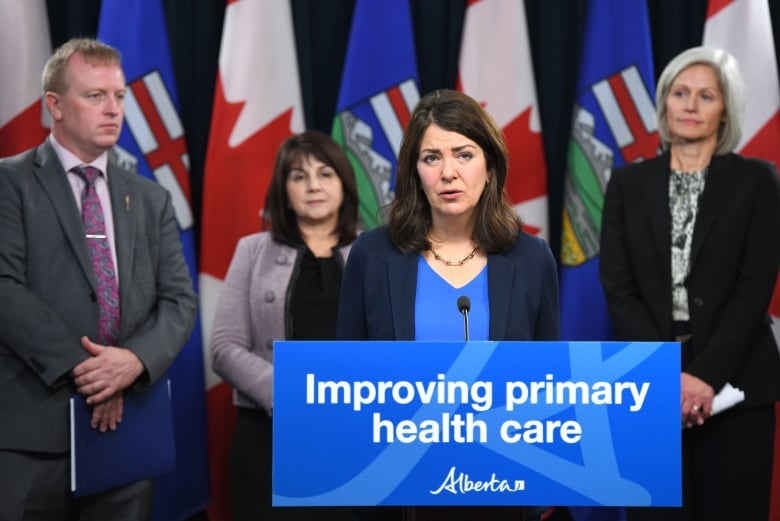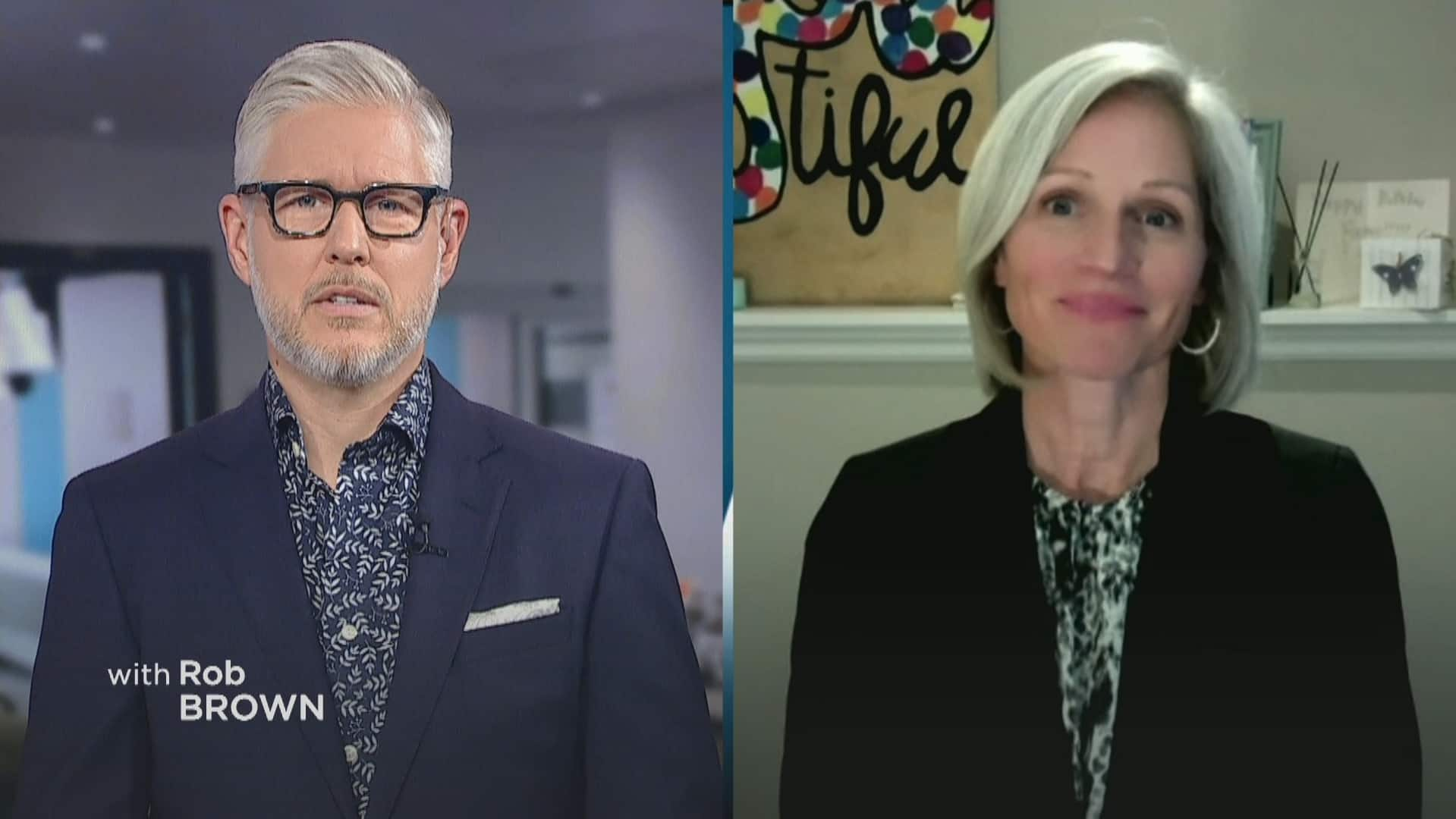
A heated debate is brewing in Alberta that has implications for the future of primary care in the province.
This week, the provincial government announced nurse practitioners will be allowed to set up their own publicly funded independent practices as early as January.
During Wednesday’s news conference, Premier Danielle Smith touted the plan as a “key part” of the solution to a shortage of family physicians that has left an estimated 600,000 — or more — Albertans without care.
“Help is on the way,” she said.
“We will stop at nothing to ensure that Albertans have access to the care they need, when and where they need it.”
Nurse practitioners (NPs), who are registered nurses with extra training, are allowed to order tests, prescribe medication, manage chronic diseases and make referrals to specialists.

A compensation model is in the works that will allow NPs to be paid directly by the province, which isn’t currently possible.
The government also promised a $2-million grant over three years to help with setup and recruitment.
Another $57 million, announced in October, means NPs and family doctors will each be eligible for up to $10,000 annually to help support growing patient caseloads.
‘False equivalency’
Reaction to the latest announcement has been strong and swift.
“It’s a false equivalency to think that a nurse practitioner is a family physician,” said Dr. Sarah Bates, the acting president of the family medicine section with the Alberta Medical Association.
According to Bates, the messaging leaves family physicians feeling devalued, overlooked and disrespected.
Yesterday we cut through the fog created by government about who provides primary care in Alberta. Our colleagues across the health care spectrum deserve respect and support. So do family physicians, who cannot be replaced by nurse practitioners. 🧵1/6
—@Albertadoctors
“It’s injurious to family medicine to see investments into nurse practitioner clinics while family medicine is gasping,” she said.
The relationship between family doctors and the provincial government has been fraught for years, sparked in large part by former health minister Tyler Shandro’s decision to rip up their master agreement early in 2020 when COVID-19 gripped the world.
The pandemic, changes to fees and an exodus of health workers also left family doctors feeling burned out and many say they’re struggling to keep their doors open.
“The ministry must act immediately to stabilize what we already have. We have to stop the hemorrhaging in family medicine,” said Bates.
NPs push back
Susan Prendergast, president of the Nurse Practitioner Association of Alberta (NPAA), said she’s taken aback by the response from doctors.
“I think we’re fighting over — or arguing over — a word. No one likes to be ‘replaced,'” she said during an interview on Alberta at Noon.
“We’re not trying to undermine or make someone feel less valued. The point is is that there’s hundreds of thousands of people that don’t have a care provider and we can do the same work.”
Featured VideoSusan Prendergast, the president of the Nurse Practitioner Association, chats with CBC Calgary about the new changes.
According to Prendergast, B.C., Ontario, Nova Scotia and New Brunswick all have independent NP clinics in place and they work well.
“The reality is this is being done across the country… It’s about time. It’s past due.”
Training requirements
Nurse practitioners, she said, must obtain at least six years of education (a four-year undergraduate degree, followed by at least two years working full-time and then a minimum two-year masters degree).
According to the Alberta College of Family Physicians, family doctors are required to have between eight and 11 years of training, including an undergraduate degree, medical school and residency.
Myles Leslie, director of research at the University of Calgary’s school of public policy, said allowing NP-led clinics could help improve access for Albertans.
“I think it’s kind of on-target. It’s consistent with moves that have been made elsewhere…. Expanding capacities in places like pharmacies and nurse practitioner clinics seems like a viable option to me,” he said.
“It is neither going to be the panacea that solves everything nor the downfall of the system.”
Leslie says he’d like more details, including whether NP clinics will be encouraged to open in areas such as rural Alberta where the family doctor shortage is most acute.
“They have a scope of practice and they will know, as part of their training, where those limits are. And their college will keep them to those limits.”
Silo concerns
But there are also concerns that opening the door to NP-led clinics will lead to more “siloed” care.
Calgary physician and health services researcher Dr. Terrence McDonald said patients are increasingly complex and fixing the crisis requires a team-based approach.
“The experience and training that nurse practitioners receive will allow them to work on a team, but it will not allow them to fully manage complex patients in isolation,” said McDonald, assistant professor in the departments of family medicine and community health sciences at the University of Calgary.
He believes NPs should work alongside family physicians and other health professionals under one roof.
“The concept of developing new infrastructure and having nurse practitioners work independently flies in the face of what we know is needed and will work for our health system,” said McDonald.
“The solution needs to be nurse practitioners need funding and support to be embedded in primary care health-care teams that already exist.”
But Ivy Bourgeault, who leads the Canadian Health Workforce Network, said it’s important to understand the umbrella of primary care includes family physicians, nurse practitioners, midwives, pharmacists and other providers.
“We do have a crisis in access. This is not something that we are going to get out of by simply having more family doctors,” said Bourgeault, a professor in the school of sociological and anthropological studies at the University of Ottawa.
“We need to have an all-hands-on-deck approach … and that really ought to be in a collaborative team.”
But, she argues, they don’t necessarily have to be under the same roof.
The key for Alberta now, Bourgeault said, is finding a path forward. That, she says, should include educating primary care providers about their varying roles and their scope of practice.
“Let’s bring people together. Let’s get some engagement. Let’s get some buy-in so people feel not discounted by a policy decision, but that they are part of the solution and implementation process.”













